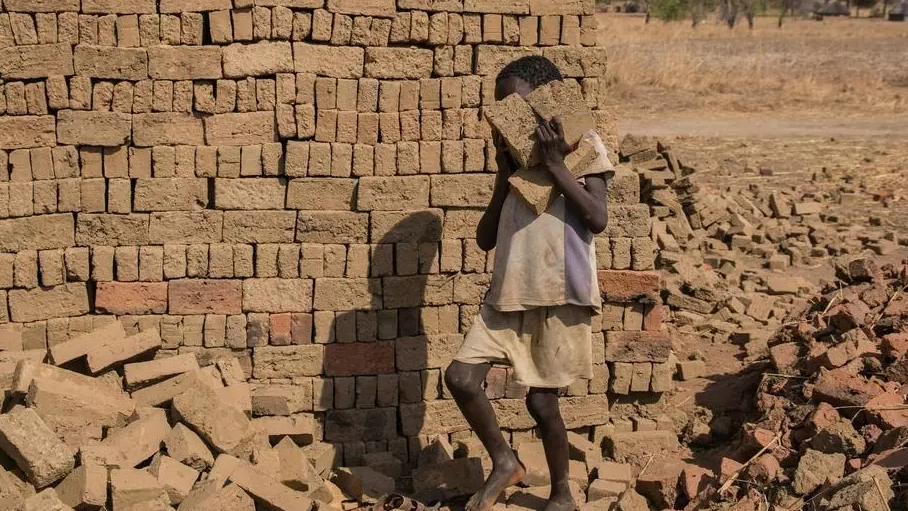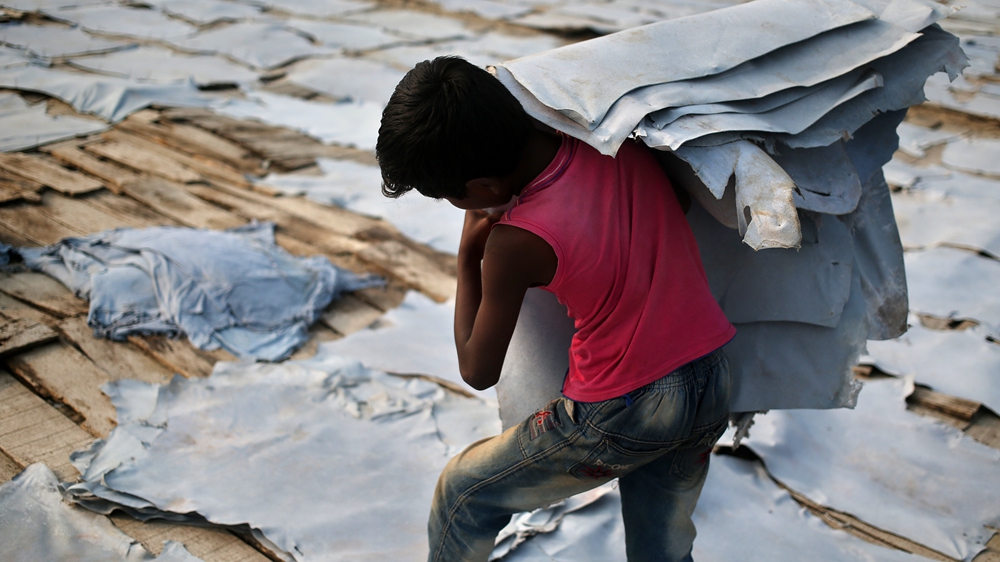
The world has marked the first rise in child labor in two decades, UN warns. /AFP
The world has marked the first rise in child labor in two decades, UN warns. /AFP
The world has marked the first rise in child labor in two decades and the COVID-19 crisis threatens to push millions more youngsters toward the same fate, the United Nations said on Thursday.
In a joint report, the International Labor Organization (ILO) and the United Nations Children's Fund (UNICEF) said the number in child labor stood at 160 million at the start of 2020 - an increase of 8.4 million in four years.
The hike began before the COVID-19 pandemic hit and marks a dramatic reversal of a downward trend that had seen child labor numbers shrink by 94 million between year 2000 and 2016, it said.
According to the report, nearly one in 10 children globally were stuck in child labor, with sub-Saharan Africa being the worst affected.
The pandemic risks worsening the situation significantly, according to the agencies, warning that nearly 50 million more kids could be forced into child labor over the next two years if no urgent action is taken to help many families hit by the pandemic.
The report, which is published every four years, showed that children aged between five and 11 accounted for over half of the global figure.
Read more:
World Day Against Child Labour: UN reiterates call to end global menace by 2025

A 10-year-old boy works at a Tanney to earn $1 a day in a low-income area in Keraniganj, Dhaka, Bangladesh, January 24, 2021. /CFP
A 10-year-old boy works at a Tanney to earn $1 a day in a low-income area in Keraniganj, Dhaka, Bangladesh, January 24, 2021. /CFP
Most-affected regions and categories
Boys were significantly more likely to be affected, accounting for 97 of the 160 million children toiling in child labor at the start of 2020.
Particularly concerning, perhaps, was the significant increase seen in children between the ages of five and 17 who are doing so-called hazardous work, which is deemed to affect a child's development, education or health.
This can include toiling in dangerous industries, like mining or with heavy machinery, and working for more than 43 hours a week, which makes schooling next to impossible.
The study revealed that most child labor is concentrated in the agriculture sector, which accounts for 70 percent of the global total, or 112 million children.
The greatest increase in child labor was seen in sub-Saharan Africa, where population growth, recurrent crises, extreme poverty and inadequate social protection measures pushed an additional 16.6 million children into child labor since 2016, the report found.
Nearly a quarter of children aged five to 17 years old in sub-Saharan Africa are already in child labor, compared to 2.3 percent in Europe and North America.
"The new estimates are a wake-up call," ILO chief Guy Ryder said in a statement.
"We cannot stand by while a new generation of children is put at risk," he said, stressing that "we are at a pivotal moment and much depends on how we respond."
(With input from AFP)

